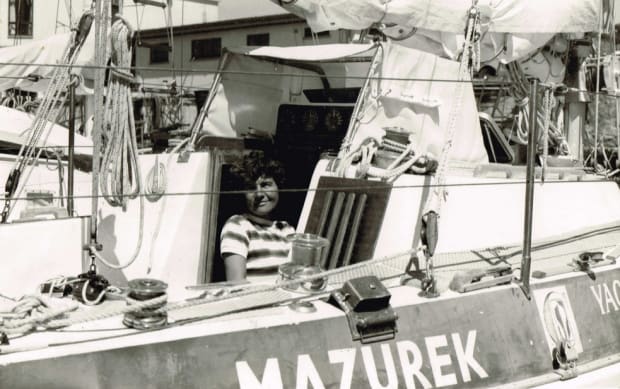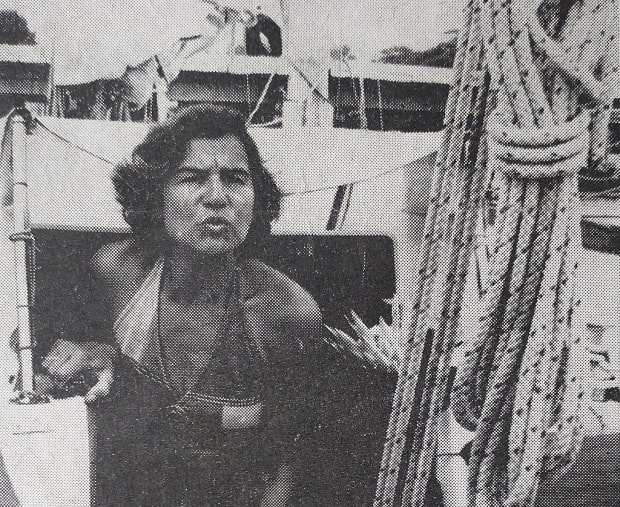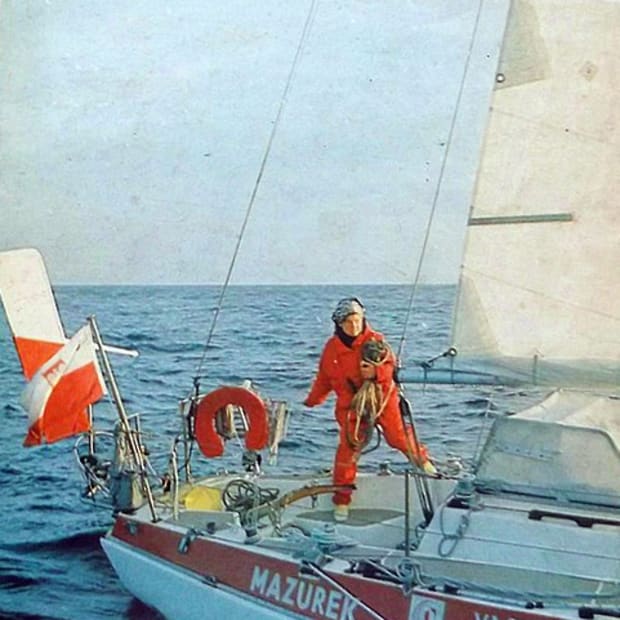
Born in Warsaw, Poland, in July of 1936, Krystyna Chojnowski-Liskiewicz did not learn how to sail until her family chose to relocate away from the country’s capital. After World War II, her home in Warsaw was absorbed into the ghetto. Her family moved from their home to Ostróda, a city in the region of the Great Masurian Lakes. In Ostróda, she learned how to sail and her interest in shipbuilding was piqued, so she studied shipbuilding at the Gdańsk University of Technology. She met her husband, Wacław Liskiewicz, while in school.
After college, Chojnowski-Liskiewicz worked in a shipyard in Gdańsk, designing and building ships. At age 30, she earned her captain’s license, and eventually organized teams of women to partake in sailing ventures previously only done by men. In 1972, she organized a trip from Poland to Scotland with a crew of four other women.
1975 was declared the International Women’s Year by the United Nations. The Polish Sailing Association wanted to find a way to promote Polish sailing and decided to sponsor a woman to be the first woman to circumnavigate the globe solo. Chojnowski-Liskiewicz was chosen, and in six months the Conrad 32 Mazurek was built. Her husband, also a shipbuilder, designed the boat custom to her needs and oversaw the team building her boat. On March 10, 1976, Chojnowski-Liskiewicz set sail from the Las Palmas Harbor in the Canary Islands. An issue with the self-steering mechanism made her return to shore in order to fix it, and on March 28, she set out again, this time for good.
She crossed the Atlantic Ocean to Barbados, where she stopped to try to have her engine fixed, unsuccessfully. From Barbados, she set out for the Panama Canal with little more than her sails. When she got to Panama, it took five weeks to fix the issue with her engine.
Because she crossed the Panama Canal instead of rounding Cape Horn, the World Sailing Speed Record Council chose not to ratify her circumnavigation. She crossed the Panama Canal on July 12, making that 102 days since she set out in March. She sailed from the canal to the Marquesas Islands, arriving on August 26. From there, she sailed to Tahiti, and from Tahiti to Fiji, where she arrived on the 25th of October. In Fiji, her ship was searched due to suspicion of drug smuggling raised by local authorities. After being searched, she was on her way to Australia, where she arrived on December 10.

Chojnowski-Liskiewicz took a break from sailing in Australia, where she spent Christmas and meetup with her husband after almost a year apart. It took three months to fix a malfunctioning generator. On May 21, 1977, she left Sydney and headed north. It took her almost two months to reach the Portland Roads, where she had to stop due to medical issues. After a brief hospital stay, She returned to the dock to find that her ship was gone. A search was quickly organized, and it was found just in time to be saved from crashing into rocks.

After saving her ship, on September 12, she set out to cross the Indian Ocean. She arrived in South Africa exactly two months later in December. She spent the rest of December in Durban and left for Cape Town on January 3, 1978. During her sail, the autohelm broke, and she had to steer the rest of the leg herself, getting around two hours of sleep a day. She landed in Cape Town on January 21 and left 13 days later. On March 20, 1978, Krystyna Chojnowski-Liskiewicz arrived in Las Palmas de Gran Canaria after 401 days away to become the first woman to circumnavigate the globe solo.
After her venture around the globe, she was awarded the Commander’s Cross of the Order of Polonia Restituta, one of Poland’s highest honors. She was also named the Gdańsk Citizen of the year in 1978. She was also given a new car.
After the feat, she wrote a book titled Pierwsza Dookoła Świata (First to Sail the World) and returned to the shipyard and her career in shipbuilding.
March is Women’s History Month, and throughout we’re sharing the stories of influential female sailors of the 20th Century. From racers to cruisers to merchant sailors, these women took to the seas in search of adventure and purpose. Their contributions broke barriers and shaped modern sailing. For previous spotlights on Hélène de Pourtalès, the first woman to win Olympic gold, click here and Annette Brock Davis, an author and merchant sailor from the 1930s, click here.








